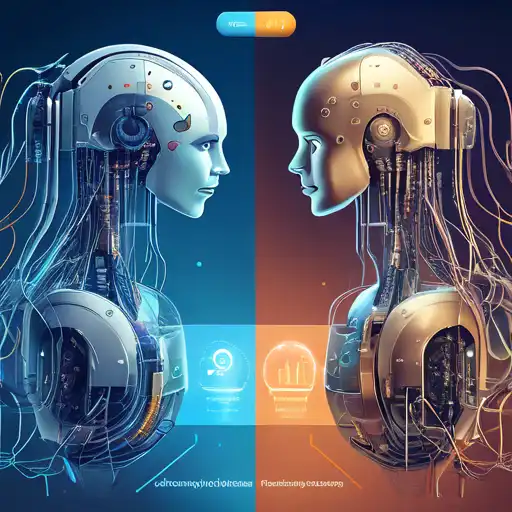Introduction to Machine Learning and Deep Learning
In the realm of artificial intelligence (AI), machine learning and deep learning are two of the most talked-about technologies. While they are often used interchangeably, they have distinct differences that set them apart. This article delves into the key differences between machine learning and deep learning, providing insights into their applications, functionalities, and how they are shaping the future of technology.
What is Machine Learning?
Machine learning is a subset of AI that enables systems to learn from data, identify patterns, and make decisions with minimal human intervention. It uses algorithms to parse data, learn from it, and then make a determination or prediction about something in the world.
Types of Machine Learning
- Supervised Learning: The model is trained on labeled data.
- Unsupervised Learning: The model works on unlabeled data and tries to find hidden patterns.
- Reinforcement Learning: The model learns by interacting with its environment and receiving rewards or penalties.
What is Deep Learning?
Deep learning is a subset of machine learning that uses neural networks with many layers (hence the term 'deep') to analyze various factors of data. It mimics the workings of the human brain in processing data and creating patterns for use in decision making.
Key Features of Deep Learning
- Automatic Feature Extraction: Unlike traditional machine learning, deep learning automatically discovers the features to be used for classification.
- Large Data Requirements: Deep learning models require large amounts of data to perform well.
- Computational Intensity: These models are computationally intensive and often require GPUs for training.
Machine Learning vs. Deep Learning: Key Differences
While both machine learning and deep learning fall under the umbrella of AI, there are several key differences between them:
- Data Dependency: Deep learning requires significantly more data than machine learning.
- Hardware Requirements: Deep learning models need powerful hardware and GPUs, whereas machine learning models can run on lower-end systems.
- Feature Engineering: Machine learning relies on manual feature extraction, while deep learning automates this process.
- Interpretability: Machine learning models are generally easier to interpret than deep learning models.
Applications of Machine Learning and Deep Learning
Both technologies have a wide range of applications across various industries. Machine learning is widely used in spam detection, recommendation systems, and fraud detection. Deep learning, on the other hand, powers more complex applications like autonomous vehicles, voice recognition systems, and advanced image recognition.
Conclusion
Understanding the differences between machine learning and deep learning is crucial for leveraging the right technology for your needs. While machine learning is suited for tasks with limited data and requires less computational power, deep learning excels in handling large datasets and complex problems. As AI continues to evolve, the line between these two technologies may blur, but their core differences will remain significant.
